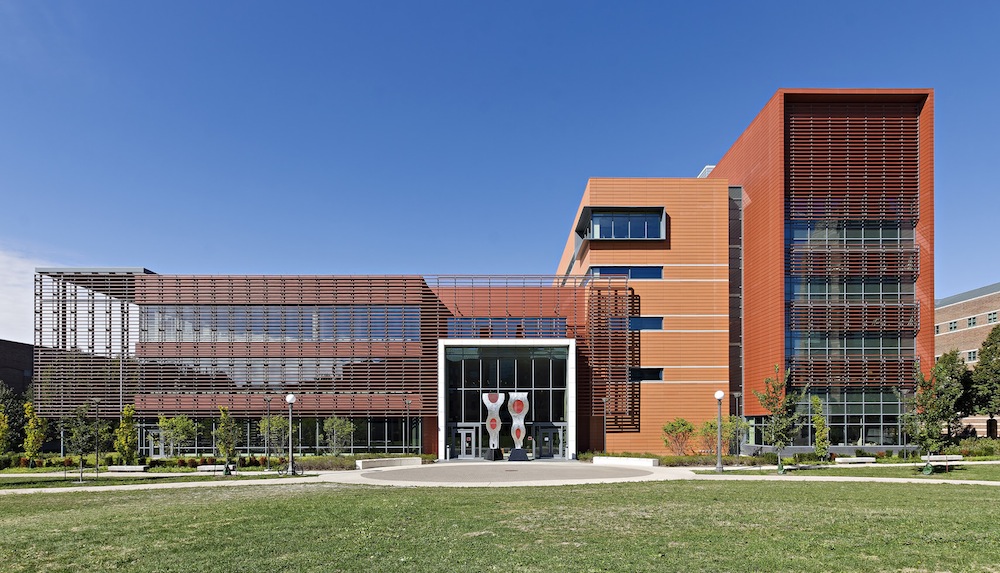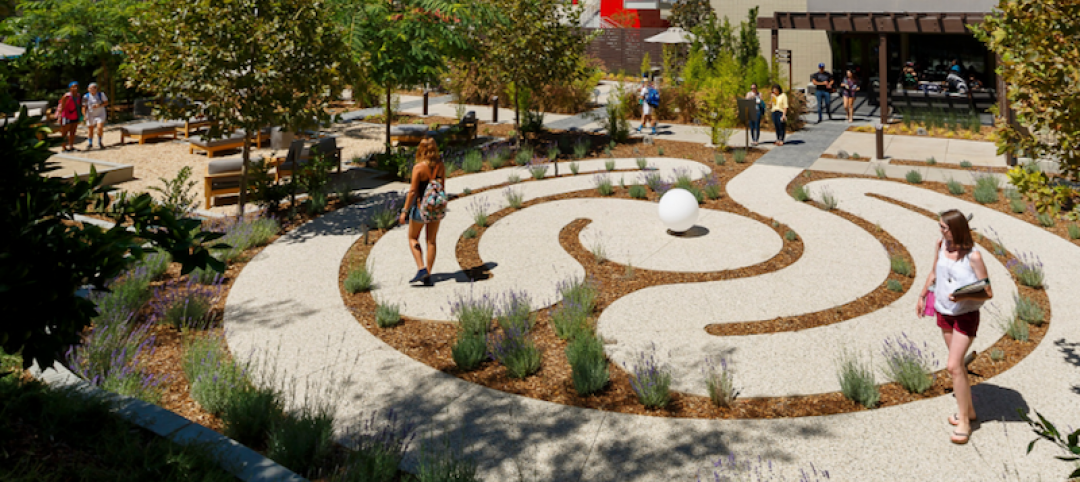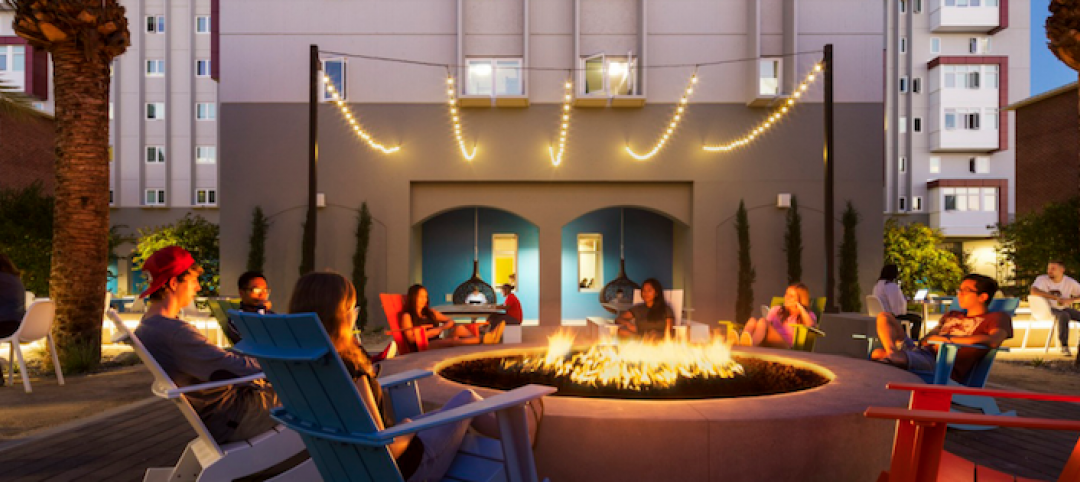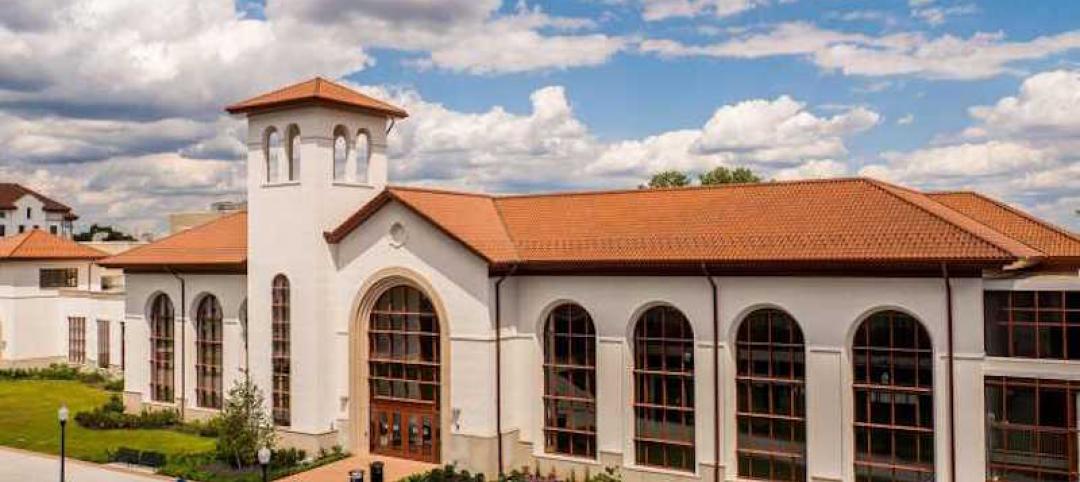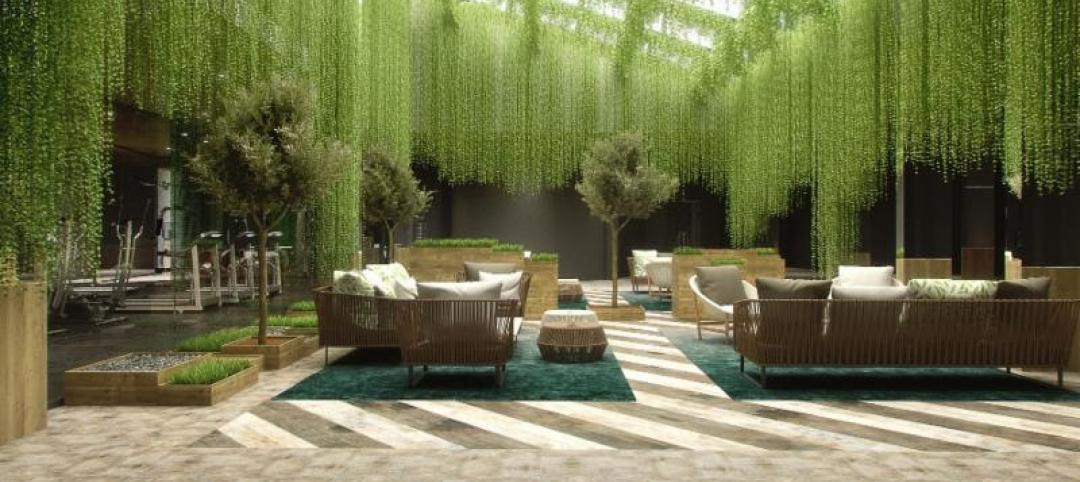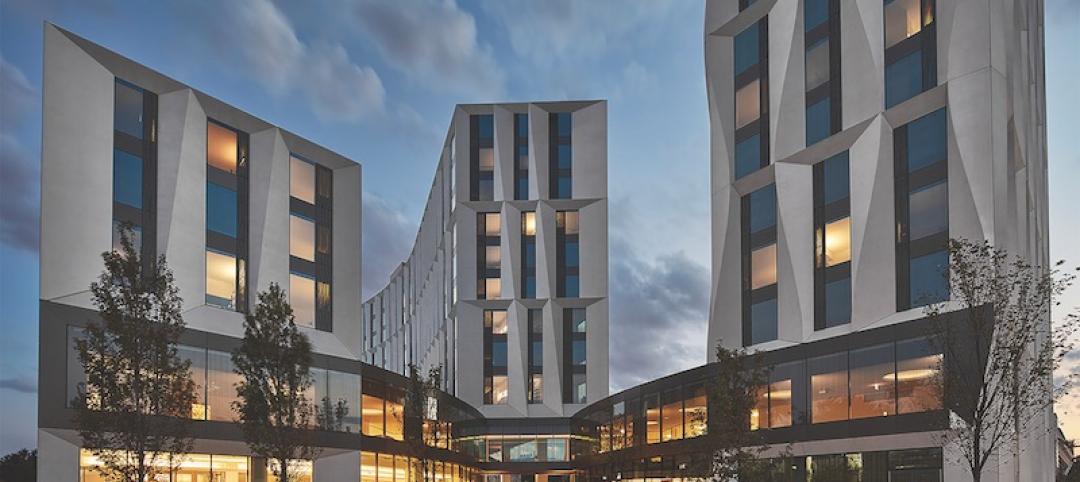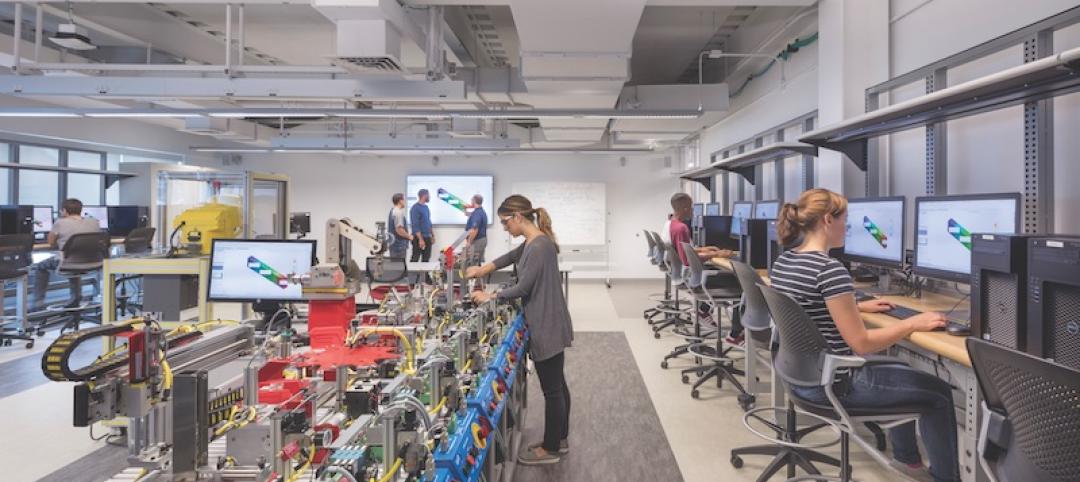The University of Illinois’s new Electrical and Computer Engineering Building has been named R&D Magazine’s 2016 Laboratory of the Year.
SmithGroupJJR designed the $95 million, 230,000-sf research facility. Located on the school’s Urbana campus, the ECE Building contains the Department of Electrical and Computer Engineering (ECE Illinois), which is known for its research in transistors, integrated circuits, LEDs and plasma displays.
The award, in its 50th year, honors new and renovated labs that promote sustainable practices and creativity in the design of modern laboratories.
The designers stressed energy efficiency. The building uses 50% less energy than minimum building energy efficiency standards, and it is targeting a LEED Platinum certification. Some of the sustainable feature include high-performance LED lighting, heat recovery chillers with net metering, and a chilled beam cooling system.
A terra cotta rainscreen system covers 70% of the building envelope, while double paned glass covers the remaining 30. Solar screens and a three-story canopy of angled louvers protect the building’s glazing from solar heat gain.
At nearly double the size of the old Everitt Laboratory, the ECE Building has space for separate labs and classrooms, and a lobby with communal seating.
"Our goal was to deliver a building that represents the stature of this world-renowned department, positions its students and researchers at the forefront of emerging technology, and acts as a catalyst for efficient building energy standards on the ILLINOIS campus,” SmithGroupJJR Project Manager Carolina Lopez, AIA, LEED AP BD+C, said in a statement. “This award is a testament of that unparalleled effort and proof that this facility goes beyond bricks and mortar to represent the department’s mission and values.”
Two Illinois-based firms were also on the Building Team. Williams Brothers Construction was the prime contractor and KJWW Engineering Consultants served as mechanical engineer. Construction was completed in 2014.
Related Stories
K-12 Schools | Aug 18, 2017
How to create healthy learning environments with active design
Active design can be incorporated into any facility or campus with a few simple steps.
University Buildings | Aug 8, 2017
Student center(ed): Is the student union the key to retention?
Studies indicate that the longer a student remains on campus—and in an academic mindset—the greater their chance for academic growth and success.
Healthcare Facilities | Aug 8, 2017
Kansas’ only medical school receives new 171,000-sf building
The building was designed to enhance the medical campus’ existing facilities, curriculum, and classrooms.
Laboratories | Aug 3, 2017
Today’s university lab building by the numbers
A three-month study of science facilities conducted by Shepley Bulfinch reveals key findings related to space allocation, size, and cost.
Education Facilities | Aug 3, 2017
School of Communication and Media at Montclair State University merges faculty, professionals, and academic programs
CannonDesign designed the facility, which features a 197-seat presentation hall and various control rooms.
Wood | Jul 10, 2017
University of Idaho Arena plans to make timber a focal point
The project received a Wood Innovation Grant that will help spur construction of the Hastings + Chivetta-designed project.
University Buildings | Jun 29, 2017
Duke University’s new alumni and visitors center is a ‘modern adaptation of the campus’ architectural style’
The project will total about 47,000 sf of new construction and renovations.
University Buildings | Jun 21, 2017
Student residence hall in Lisbon takes biophilic design to the next level
The luxury student accommodations will be Collegiate’s first outside of the U.K.
Building Team Awards | Jun 7, 2017
Blurring the lines: University of Chicago North Residential Commons
Gold Award: The University of Chicago’s new Residential Commons is part campus, part community.
Higher Education | Jun 7, 2017
Building for the future: Five trends in higher education projects
Preparing students for life after graduation has become the primary motivator behind construction initiatives at U.S. colleges and universities.


